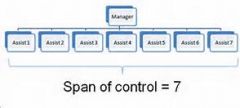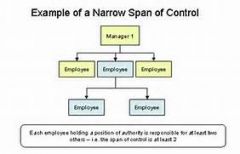![]()
![]()
![]()
Use LEFT and RIGHT arrow keys to navigate between flashcards;
Use UP and DOWN arrow keys to flip the card;
H to show hint;
A reads text to speech;
32 Cards in this Set
- Front
- Back
|
Organizational Culture and what does it ensure that organizational members do?
|
A firm's shared values, beliefs, traditions, philosophies, rules and role models for behavior (aka corporate culture)
Ensures that: -that they share values - observe common rules - share problem solving approaches |
|
|
What does formal expression entail? (6)
|
Mission statement, code of ethics, manuals, ceremonies, memoranda, stories (sometimes becomes mythical)
|
|
|
What is informal expression? (3)
|
dress code (or lack of one), work habits, and extracurricular activities
|
|
|
Organizational Structure
|
Is the arrangement or relationship of positions within an organization
Structure develops as: -managers assign work tasks to individuals and groups -coordination of diverse activities to attain objectives |
|
|
Organizational Charts
|
visual displays of the organizational structure, lines of authority, staff relationships, permanent committee arrangements and lines of communication
|
|
|
Specialization and why do you specialization?
|
managers divide the labor into small, specific tasks and assign employees individual tasks to accomplish
Why specialize? -efficiency - ease of training -activities too numerous for one person |
|
|
Departmentalization and what are the 4 different departmentalizations?
|
Group of jobs into working units (departments, units, groups, divisions)
4 types: functional product geographical customer |
|
|
Delegation of authority
|
Giving employees tasks and empowering them to make commitments, use resources and take action to carry out tasks
|
|
|
Responsibility
|
Obligation placed on employees to perform assigned tasks and be held accountable for proper execution
|
|
|
Accountability
|
employees who accept an assignment and the responsibility to complete it are answerable to a superior for work outcomes
|
|
|
Centralized organizations
|
authority is concentrated at the top level
very little delegation to lower levels |
|
|
Decentralized organizations
|
decision making authority is delegated as far down the chain of command as possible
|
|
|
Span of management
|
the # of subordinates who report to a particular manager
wide span & narrow span |
|
|
Wide Span of Management
|

exists when a manager directly supervises a very large # of employees
(flat organization) decentralized |
|
|
Narrow Span of Management
|

exists when a manager directly supervises only a few subordinates
centralized |
|
|
Line and Staff Structure
|
can provide info to other departments
report up |
|
|
Multidivisional Structure
|
organizes departments into larger groups called divisions
occurs as organizations grow larger and more diversified Divisions can be formed on the same bases as departments: customer, product, and geography Delegation of authority and divisionalized work |
|
|
Matrix Structure
|
most complex form
multiple bosses + expectations chaotic for employee |
|
|
Group
|
two or more individuals who communicate with one another, share a common identity and have a common goal
|
|
|
Team
|
a small group whose members have complementary skills; have a common purpose, goals, and approach; hold themselves mutually accountable
|
|
|
Groups vs. Teams
|
?
|
|
|
Committee
|
a permanent, formal group performing a specific task
|
|
|
Task force
|
a temporary group responsible for a particular change activity
|
|
|
Project teams
|
similar to task forces in that they have total control of a specific project
|
|
|
Product Development Teams
|
formed to devise, design and implement a new product
|
|
|
Quality Assurance Teams (Quality Circles)
|
brought together from throughout the organization to solve specific problems
|
|
|
Self-directed Work Teams
|
responsible for an entire work process that delivers a product to a customer
|
|
|
Organizational Communications
|
?
|
|
|
Technology and Communication
|
Technology has generated many alternatives to face-to-face communication
ex. voice mail, email, online newsletters, videoconferencing, online meeting services |
|
|
Formal Communication
|
Flow of communication within the formal organizational structure as depicted on organizational charts
upward, downward, horizontal, and diagonal communication |
|
|
Informal Communication
|
separate from management's formal, official communication channels
"grapevine" managers can utilize informal communications as a sounding device |
|
|
Monitoring Communications + how must managers monitor communications?
|
technological advances and electronic communication have made monitoring communications at work necessary
Managers must monitor communications: -without invading employee privacy - while generating respect and mindfulness amongst employees |

